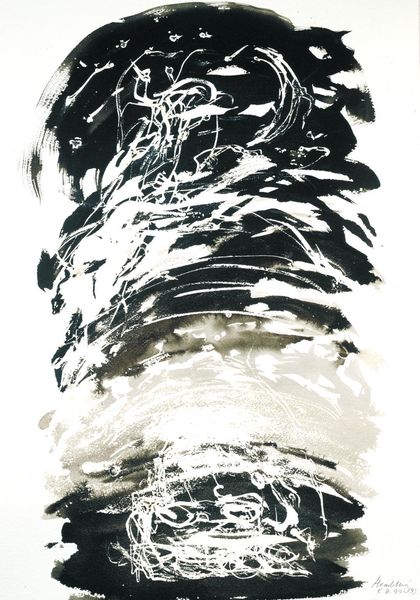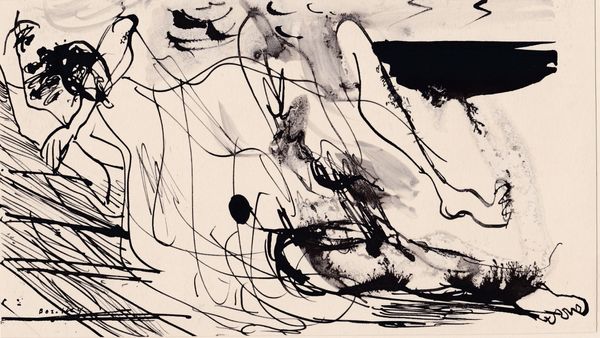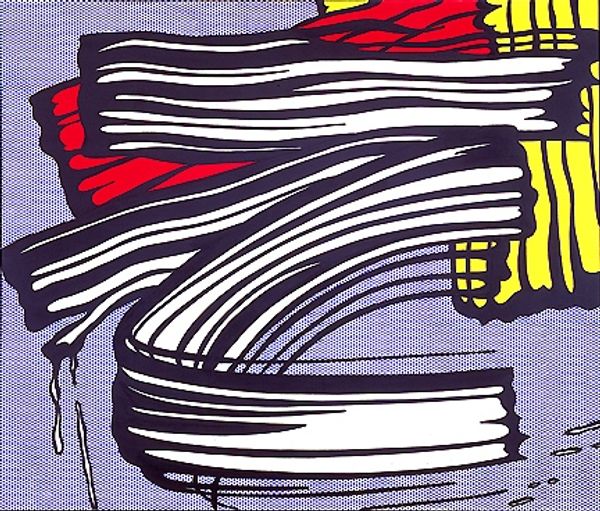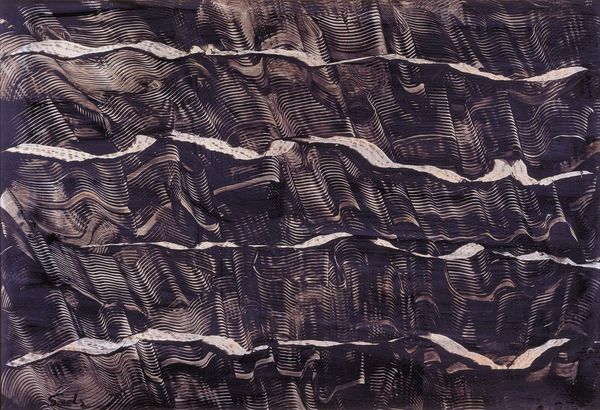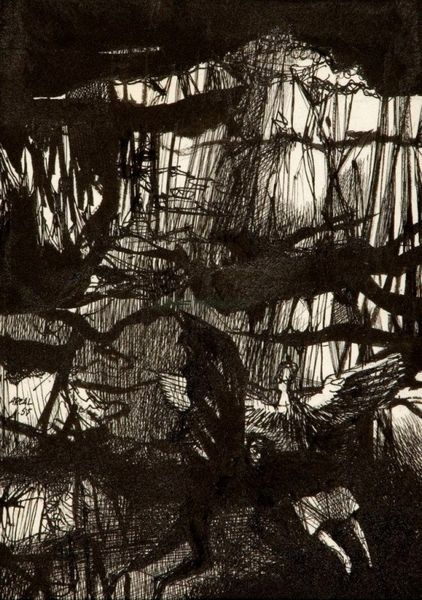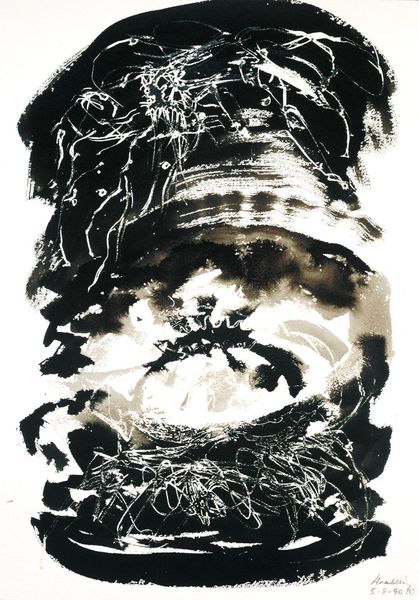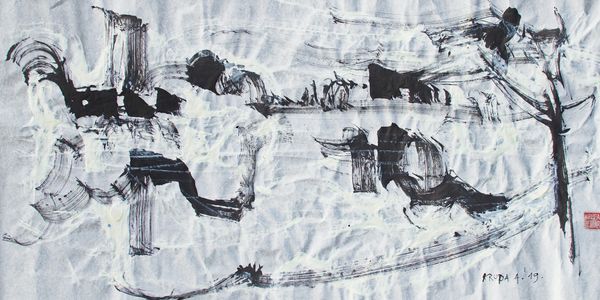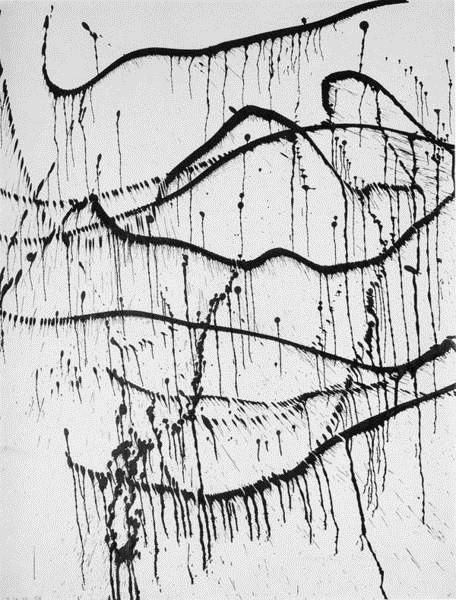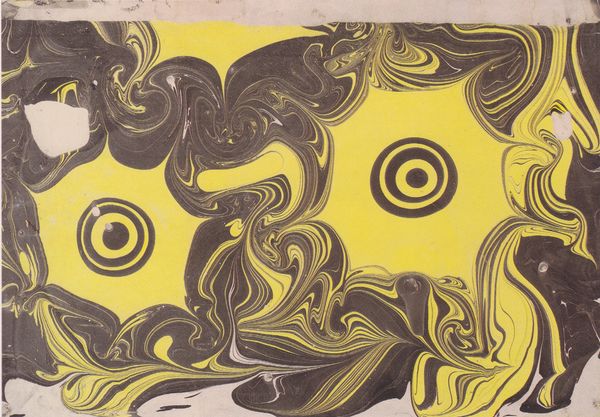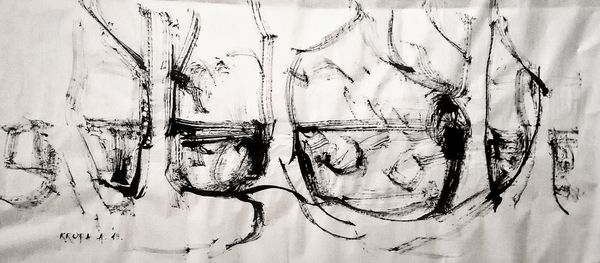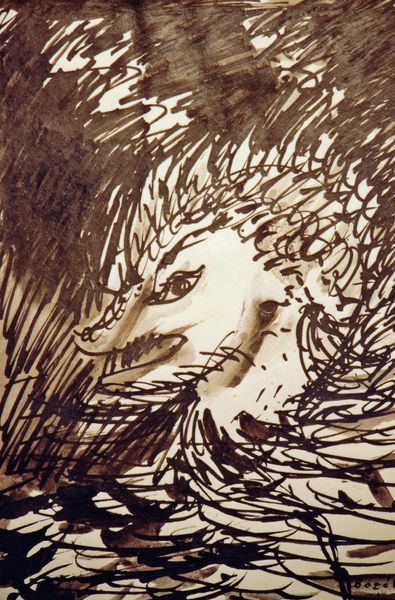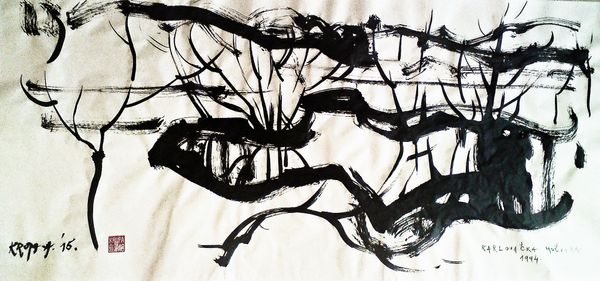
acrylic-paint
#
acrylic-paint
#
abstraction
#
pop-art
#
line
#
comic style
#
monochrome
Dimensions: 56.5 x 76.2 cm
Copyright: Roy Lichtenstein,Fair Use
Editor: Roy Lichtenstein's "Brushstrokes," created in 1966 using acrylic paint, presents a fascinating study in black and white. The bold lines are reminiscent of comic book art, but there’s something unsettling about the deconstruction of painting itself. What statements do you believe Lichtenstein makes with this work? Curator: It’s a brilliant subversion, isn't it? Lichtenstein, firmly planted in the Pop Art movement, uses this exaggerated, almost cartoonish style to comment on Abstract Expressionism. It’s not just about brushstrokes, but about challenging the very notion of originality and authenticity so valued in art history. Editor: So, he's critiquing the macho, spontaneous gesture of artists like Pollock? Curator: Precisely. Consider the social and political context: the rise of consumer culture, mass media. Lichtenstein appropriates and reproduces, mirroring how society itself was reproducing images and ideas. It prompts us to ask: who controls representation? Whose gestures are valued and why? He questions the commodification of artistic expression itself. Editor: The monochrome palette and the Ben-Day dots add to that sense of mechanical reproduction, I guess. It strips away any hint of the artist's 'hand.' Curator: Absolutely! He's inviting a dialogue between high and low culture, critiquing the art world's elitism and raising questions about what we deem "art." It’s a powerful intervention in a period defined by rapid social and cultural shifts, wouldn’t you agree? Editor: I hadn't thought about it that way, but I can appreciate how his work really makes a statement about art itself. Curator: That's the brilliance of it: it's deceptively simple but full of complexity when we think of the socio-political and historical moment in which it appeared.
Comments
No comments
Be the first to comment and join the conversation on the ultimate creative platform.
